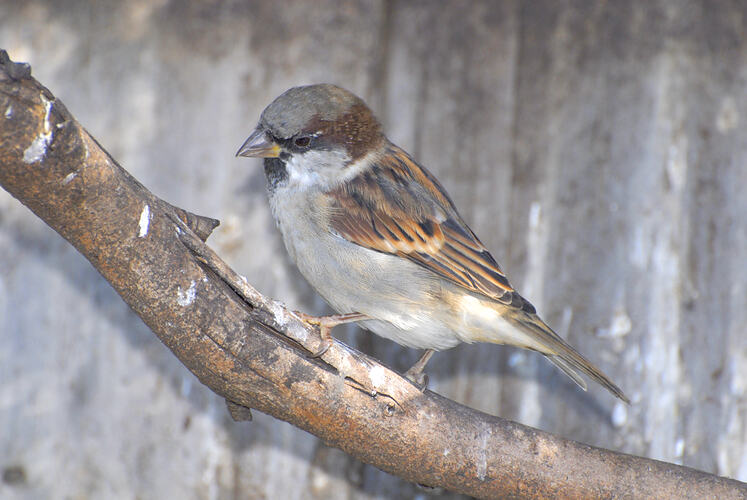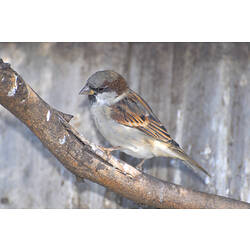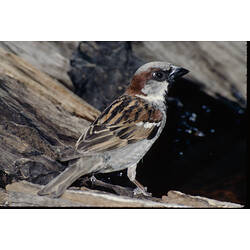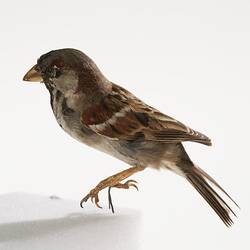General Description
Male: upper body grey-brown; underparts light grey; back of neck brown; back and wings brown with black streaks. Female: similar to male, but head light grey-brown. Body up to 15 cm long.
Biology
Introduced in 1863, House Sparrows are now widely distributed across Australia. They eat insects and other invertebrates, as well as seeds and some fruit. House Sparrows are usually found in large flocks. They often nest in buildings.
Distribution
Worldwide. Southern and eastern mainland Australia and Tasmania.
Habitat
Most areas, including farms and urban areas.
More Information
-
Animal Type
-
Animal SubType
-
Brief Id
Brown and grey with black markings.
-
Colours
Brown, Grey, White
-
Habitats
Wetland, Urban, DryForest, WetForest, Woodland, Mallee, Grassland
-
Diet
Omnivore
-
Diet Categories
Insects, Seeds, Fruit, Invertebrates
-
Endemicity
-
Conservation Statuses
CITES: Not listed, FFG Threatened List: Not listed, EPBC Act 1999: Not listed, IUCN Red List: Least Concern
-
Taxon Name
-
Common Name
House Sparrow
-
Kingdom
-
Phylum
-
Subphylum
-
Class
-
Order
-
Family
-
Genus
-
Species Name
domesticus






